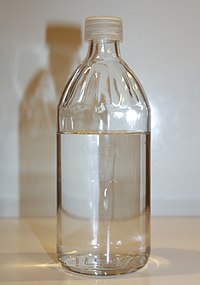
Photo from wikipedia
In this article a new spent catalyst sample preparation method was implemented for the purpose of molybdenum leaching in a single step. Further molybdenum and vanadium in the leach liquor… Click to show full abstract
In this article a new spent catalyst sample preparation method was implemented for the purpose of molybdenum leaching in a single step. Further molybdenum and vanadium in the leach liquor were separated and their concentrations were enriched using the solvent extraction and stripping techniques. The impervious sulfur (S 0 ) layer of the spent catalyst sample was removed using carbon disulfide (CS 2 ). The advantages of S 0 removal were evaluated by conducting different sets of the Mo leaching experiments and they were further examined by varying different conditions such as three lixiviants, hydrogen peroxide (H 2 O 2 ) addition, and three leaching parameters. The leaching rate increased in an order, e.g. acetone washed < acetone-CS 2 washed < acetone washed-H 2 O 2 < acetone-CS 2 washed-H 2 O 2 , for the experimental concentration range of different lixiviants with the maximum of 94.8%(w/w) Mo dissolution in a single step. Optimization of the pulp density was important as the interaction of lixiviant molecules with multiple reacting solid particles decreased the driving force of the chemical reactions. The solvent extraction followed by the stripping technique was found to be excellent as the concentration of vanadium and molybdenum enriched from 0.55 to 1.9 M and 0.0448 to 1.08 M, respectively.
Journal Title: Scientific Reports
Year Published: 2020
Link to full text (if available)
Share on Social Media: Sign Up to like & get
recommendations!